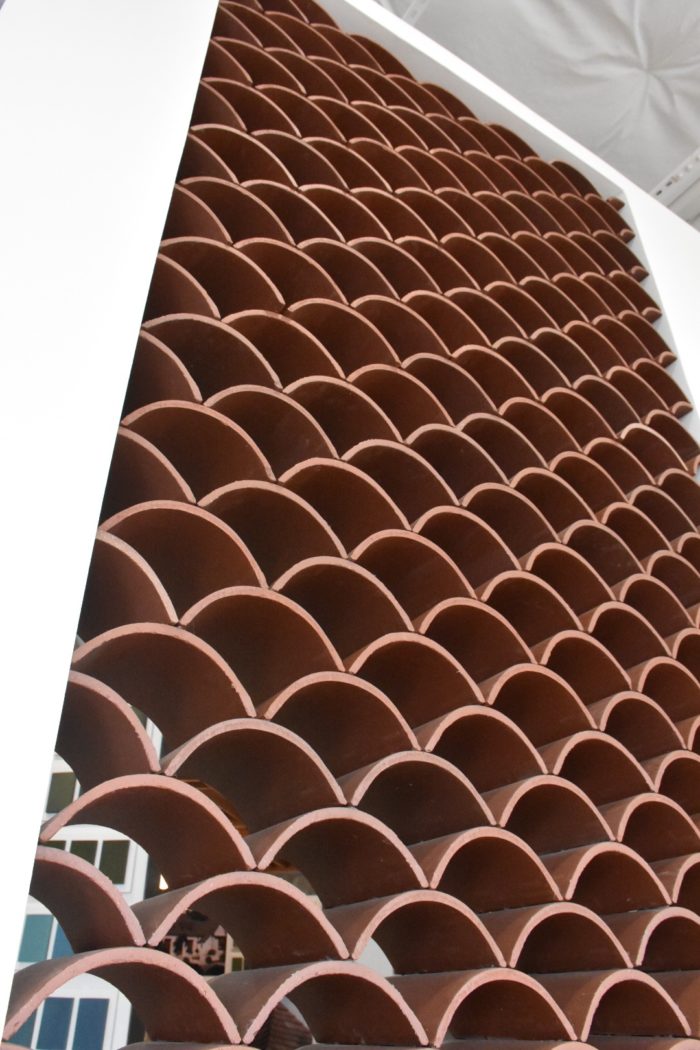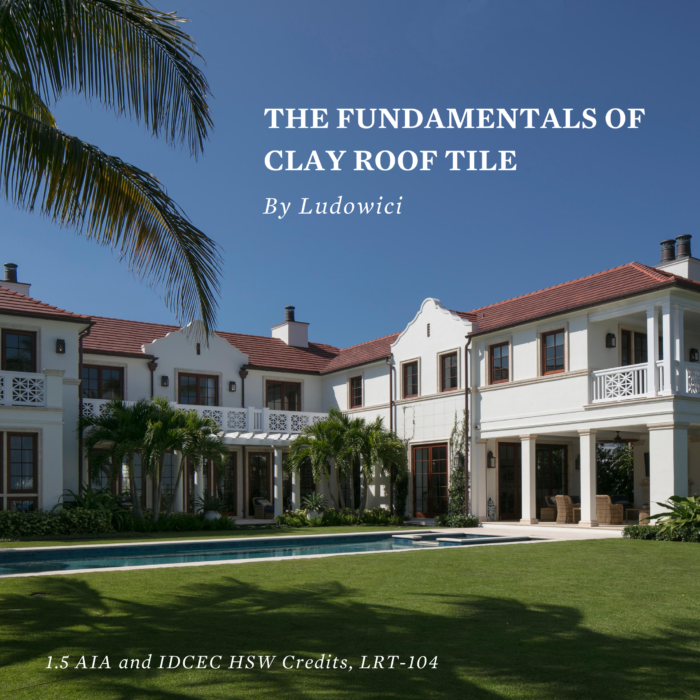
During our push to use an online webinar format to educate industry partners in 2020, we have found valuable feedback in insightful questions to which many others may benefit. Below are some candid Q&A’s you may find helpful:
QUESTION: How many square feet of material do you produce in a year?
ANSWER: Our historic tile factory in New Lexington, Ohio currently produces around 6,000,000 million pieces of tile a year. We make many different shapes, sizes, and customizations… so it’s hard to say precisely how many sq./ft. that is. But if you take an average tile size, it would be close to 4,000,000 sq./ft. on average.
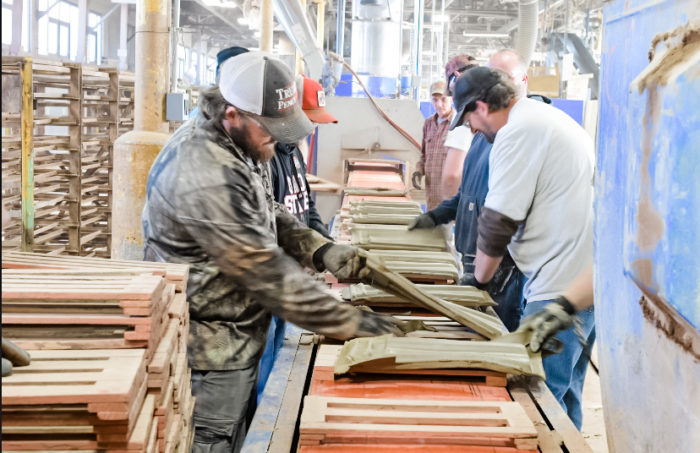
QUESTION: In the Northeast, do glazed tiles perform better than non-glazed tiles?
ANSWER: Many people often believe that glazed tiles can perform better than non-glazed tiles. This may be true for some manufacturers, depending on the clay body they use. However, it is not the case for our tiles and the clay body we use.
Our natural clay body (the color is called Clay Red), is the same clay base we use for our glazed colors. Both perform equally as well, with or without glaze. Our “Clay Red” is 100% natural clay—nothing done to it other than shape it, dry it, and fire it. The remainder of our color palette is formed with natural glazes made from minerals. These glazes are mineral pigments mixed with a wet clay slurry to form a glaze (can be glossy or matte). This clay slurry is applied to our natural clay body (as a glaze)and then dried and fired. The clay slurry (or glaze) fuses into the clay body during the firing process and creates the tile’s final surface color.
Since we use the same clay body for all of our colors, the glaze does not affect our tiles’ performance. All over the northeast, we have non-glazed and glazed products over 100 years old and still performing very well.
QUESTION: How do you nail through one of these terra cotta tiles?
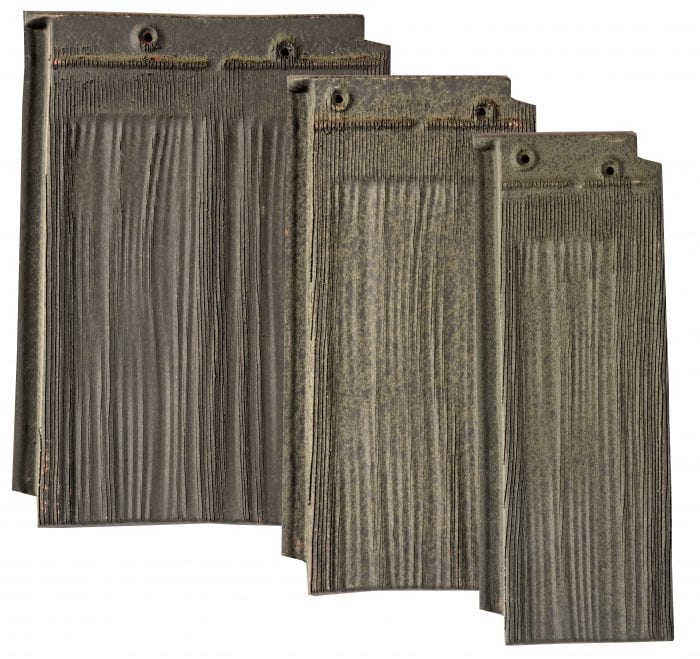
ANSWER: Our terra cotta roof tiles are manufactured with factory-provided holes that allow mechanical anchors/attachment. All of our roof tiles come with holes for attachment anchors—each shingle field tile is provided with (2) two fastening nail holes, while our mission tiles come standard with (1) one.
Our large module rain-screen and wall cladding tiles are made with tongue and groove edges that attach with concealed stainless-steel clips (so no holes are needed).
Nails are the most commonly used fastener for attaching clay tiles. Nails for tiles and cleats must be copper or stainless steel, 11 gauge minimum, .285” – .312” head minimum and proper length to give good penetration. Screws must be stainless steel or brass, #8 or #9 with a minimum .285” – .312” diameter head.
Note: The use of Galvanized, Ceramic coated or any other fastener not mentioned above is not acceptable to Ludowici. All components of the roof should have an expected lifespan of 75+ years.
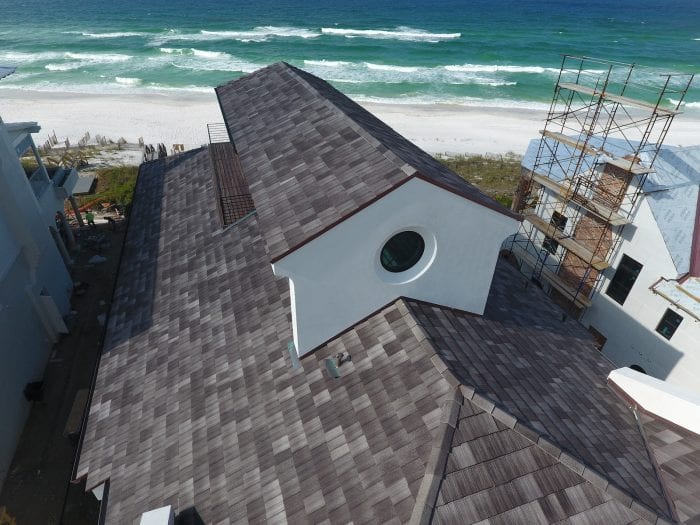
QUESTION: Is life expectancy reduced in coastal climates? Would the glazed finish hold up to salt spray or wind-driven sand on a beach house?
ANSWER: For Ludowici products, the answer is no life expectancy is not reduced. However, it depends on what manufacturer you pick and the quality of their tile. Our company has many examples of this type of use with very proven results. Our products have no issue with coastal performance because they are ASTM C1167 Grade 1 rated, have very low water absorption, and very high breaking strength. Our tiles will withstand salt spray and sand (and have for a very long time) due to those physical characteristics. We are often called on to provide replacement terra cotta roofs for competitors and offshore manufacturers who make Grade 2 and Grade 3 tiles that fail in coastal environments.
Why are coastal areas harsher on exteriors and roofing tiles? Because salt intrusion is the enemy! Salt from coastal air can quickly be devastating to building products—especially with substandard terra cotta not designed to prevent it. In a more porous tile, salt crystals infiltrate open pockets then begin to expand & contract. Once sea salt permeates the clay body of a tile, it will fail. With salt air being able to travel well over a mile inland from the coastline, you need the clay body of a Ludowici tile made to resist such complications. Because Ludowici terra cotta tiles have dense clay bodies and a very low water absorption rate, they are able to withstand salt intrusion.
QUESTION: On the First Baptist Church of Asheville dome where you re-created the faded copper patina look for the building owner, how many colors were made? Was the pattern specified, or did the roofers create the look? Who details the accessory pieces, the fabricator or the architect? Also it was referenced that the original tile roof had to be replaced. What caused it to need replacement? In my restoration experience, we typically lift and reinstall, replacing only tiles that were broken or missing.

ANSWER: There were around 8 colors made to create the color variation on the First Baptist Church dome. Photos of the existing roof and staining patterns were taken before the removal of the original tile. The photos were used to create a “color map” for the installer to use in putting all the new tiles back on. It turned out so amazing!
Regarding the tile accessory pieces, it’s some of both. However, generally on our projects, the architect works with us early in the design phase to correctly detail and specify terra cotta trims desired to complete roof and wall transition areas.
On many of our historic renovation projects, like the First Baptist in Asheville, the building owner must decide whether to reuse the tiles or go back with all new. As you note, sometimes they choose to test the existing tiles—for things like water absorption and breaking strength—and if they test out good, they will reuse the tile. Sometimes they realize that the tiles are getting close to 75-130 years old, so they decide to go ahead and replace with all new tiles. We see both regularly.
QUESTION: Do glazes crack or chip over time?
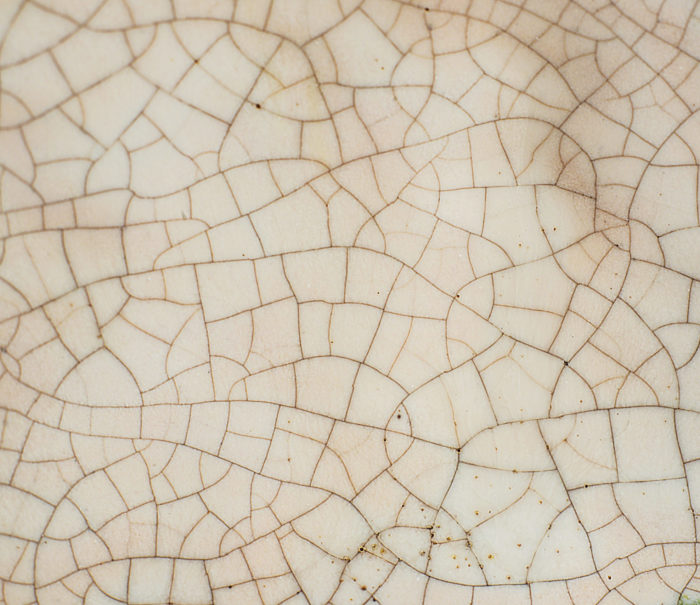
ANSWER: Cracking glaze in the industry is referred to as glaze crazing. Although often seen in porcelain, terra cotta products can have glaze crazing occur.
However, if you are dealing with a manufacturer that has extensive experience and history in glazed products, you will most likely be purchasing products that will not craze.
Ludowici products do not have a crazing issue. When you glaze products, the glaze engineering must be so that the glaze layer movements are at the same rate as the clay body movement during expansion and contraction. If the two move at the same rate, crazing does not occur.
Many other manufacturers have issues with crazing because they cannot engineer the glazing process the proper way. We have been glazing roof tiles for over 100 years and have perfected our technique to prevent this potential issue.
Regarding chipping, severely chipped selective glazed tiles can be replaced following the procedures of our Quik-Tach brackets for broken tiles that need to be replaced. Small chips, if visible from a certain viewing distance that may not need to be replaced but repaired, and can be touched up with a concrete stain similar to the tile/glaze color.

QUESTION: How does terra cotta compare in cost to copper or metal roof?
ANSWER: Ludowici offers terra cotta roofing products that range from $3/SF to $30/SF (field tile / material only) and everything in between. Some of our less expensive and lighter weight products are in line with metal roof pricing. Copper roofing tends to fluctuate more and has a higher cost than steel/aluminum metal roofing systems. If you have a project you are interested in considering terra cotta tiles for, we can help you select a profile and size that can work for your budget.
QUESTION: What is the length of your material warranty?
ANSWER: Ludowici products that are produced in our historic New Lexington, Ohio production facility automatically come with a 75-year material warranty, including color.
QUESTION: Have you done tests on wind loads for storms and hurricanes resistance on Southern SE coastal areas, and the Caribbean? Do you have hurricane resistant installation recommendations? What underlayment is preferred or recommended?
ANSWER: Yes, we do a tremendous amount of work in these areas and the Caribbean. All of our roof tiles are rated for high wind zones, with the proper attachment. We have the Florida Building Code, Miami-Dade, and Texas Department of Insurance (TDI) acceptance for all our tiles. These test approvals are frequently used and referenced by building designers when we work in those coastal areas.
Also, every tile Ludowici manufactures is ASTM C1167 Grade 1 Certified. The American Society of Testing Materials (ASTM) uses ASTM C1167 as the performance evaluation standard for terra cotta roof tiles across the industry. Tiles rank into a Grade 1, Grade 2, or Grade 3 rating system—with a Grade 1 having top performance and approved for use in any climate. Comparing this with the grade map of the United States, lower grade tiles are not suitable for specific regions—like coastal, hurricane-prone areas, for example. Ludowici products last a lifetime in any climate.
Our tiles also have the highest wind uplift capacity and weather performance than any other clay tile on the market. The composition of our tiles provides high air permeability, helping relieve wind stress during extreme weather events—like tornadoes and hurricanes. When properly installed, high-quality terra cotta tiles can sustain winds in excess of 125 miles per hour—the kind that would easily strip off many other roofing materials. The amount of resistance is based on the tile type and the attachment method. All the resistance values are listed in our approvals and can be shared if necessary.
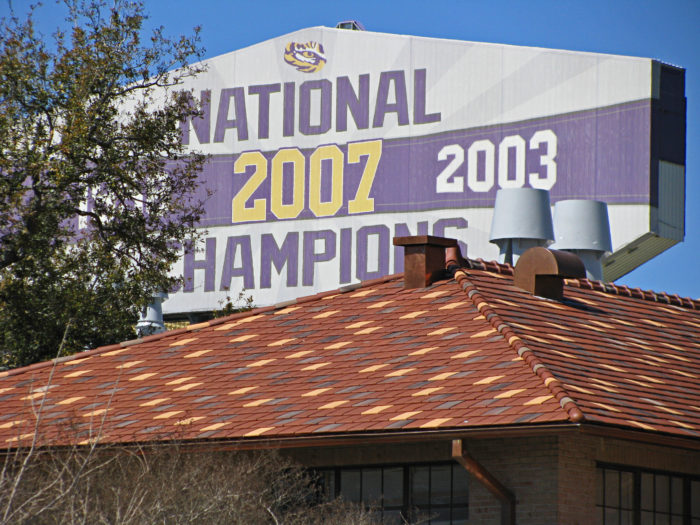
One example, we supply the tile roofs for all the buildings on LSU’s campus (hurricane alley). LSU’s facilities team has indicated that our tile roof material performs better than any of the other roofing materials on their campus under high winds. Examples of some recent projects we have/are working on in the San Juan area include the Jose Toledo US Courthouse, the US Customs House, the Ritz Carlton, Institute of Tropical Forestry, and the University of Puerto Rico.
Regarding underlayment, we can guide that through our technical team. Our basic installation guides call for a minimum of 2-layers of 30# felts. However, we regularly assist project designers in helping select the best underlayment type for how the building will be designed and used. There are factors of venting, building use, attic space, insulation type, insulation location, etc. You must also factor in the best underlayment type for the structure: i.e., permeable, non-permeable, self-adhered, mechanically adhered, etc.
So it’s not a clear-cut easy answer – but we offer several different types of underlayment through our Trade Goods Department and it’s something we can assist with and should be discussed on a project-by-project basis.

QUESTION: In some applications, why do we see mortar used in the Spanish tile installation?
ANSWER: Many times, the mortar is solely for aesthetics (to provide an old-world look).
Other times, mortar is used as an anchoring method for hip/ridge tiles or can be used to close open areas along valleys, eaves, rakes, etc. (however, there are other options like Flexible Flashing that we offer from our Trade Goods Department).
If you see mortar in the roof’s actual field tile areas, it’s most likely for decoration or aesthetics.
QUESTION: We are in Tampa, Florida. Mold growth is a concern in our area. Do you have any information about black mold?
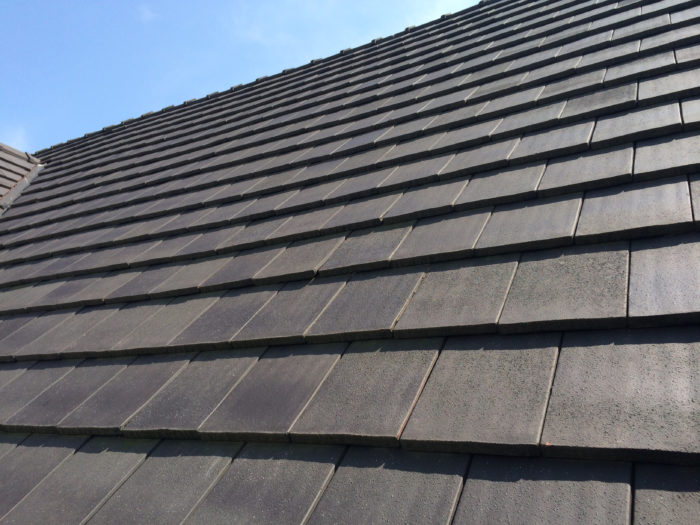
ANSWER: Roofing materials are susceptible to mildew, algae, mold and moss (including tiles–concrete and clay) and do, on occasion, require cleaning. Clay tiles typically have much lower water absorption rates than concrete tiles, causing mold/mildew growth to happen a lot less.
Ludowici tiles have the lowest water absorption rate—less than 2%— of anyone else on the market. High quality tiles with smooth surfaces and very low water absorption rates, like those produced by Ludowici, dramatically limit mold, mildew, algae, and moss growth by preventing moisture from entering the clay body in the first place.
For cleaning, Prosoco specializes in the manufacturing of cleaning solutions for natural products, such as clay roof tile. Please visit their website at www.prosoco.com for more details.
Aside from cleaning, there are detailing methods that can be used on new roof designs to reduce mold/mildew growth significantly. First is to select a tile with low water absorption rates (like very well-made clay tiles). Mold/mildew needs moisture to grow, so if the tiles do not absorb moisture, less growth can occur.
Second is to detail the roof (hips and ridges) with exposed copper. The hip and ridge cover can be exposed copper, or it can be exposed under the hip/ridge tile caps. The exposed copper will keep the roof tiles very clean as the water runoff prevents mold/mildew growth (from the rain touching the copper). You can see on roofs with exposed copper trims that the roof areas below the exposed copper are typically very clean and free of mold/mildew growth.
QUESTION: In Colorado, we have some severe weather events to include baseball size hail. Can you speak about the impact capabilities of this product?
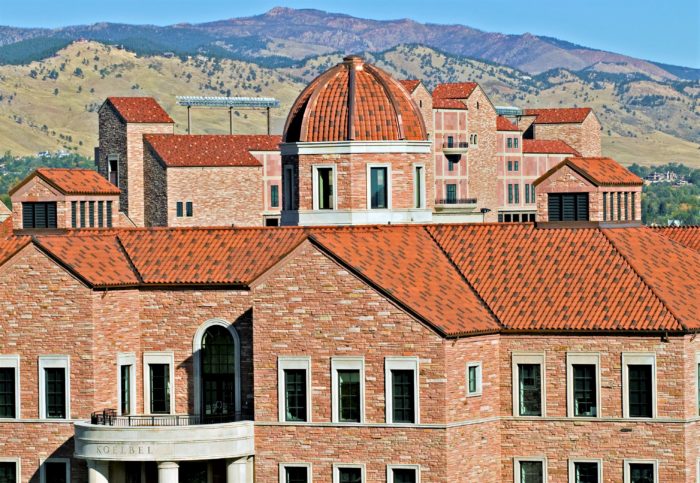
ANSWER: We make many different styles of terra cotta roof tiles that vary in thickness, weight, and profile. Some of our thicker products meet the higher hail ratings of 3 and 4. Some of our lighter/thinner profiles fall into the 1 and 2 categories for hail. Once you have a specific tile you are interested in for a project, we can share the hail testing info.
While some of our thinner and lighter tiles can break due to larger hail, it should be noted that hail is an issue for almost all roofing products (especially baseball size hail!).
With you being in Colorado, our products have a large and historic presence in the state, including a very successful history on the majority of the buildings at University of Colorado, Boulder. Other notable projects include Denver Union Station, The Broadmoor Hotel in Colorado Springs, and the Cathedral Basilica of the Immaculate Conception, also in Denver.
QUESTION: How does terra cotta compare in cost to copper or metal roof?
ANSWER: Ludowici offers terra cotta roofing products that range from $3/SF to $30/SF (field tile / material only) and everything in between. Some of our less expensive and lighter weight products are in line with metal roof pricing. Copper roofing tends to fluctuate more and has a higher cost than steel/aluminum metal roofing systems. If you have a project you are interested in considering terra cotta tiles for, we can help you select a profile and size that can work for your budget.
QUESTION: What type of tiles are used in traditional Asian buildings?
ANSWER: Typically, Asian building roofs have utilized terra cotta tiles (similar to Spanish tiles) and often times are glossy glazed and come with a lot of decoration. We are asked on occasion to replicate those styles of roofs. However, a lot of times, due to the amount of ornate decoration and customization, costs become a hurdle. We can achieve color matching and customize glazing to meet unique goals.
QUESTION: In Ludowici’s history, did they ever manufacture structural clay blocks found in many old structures?
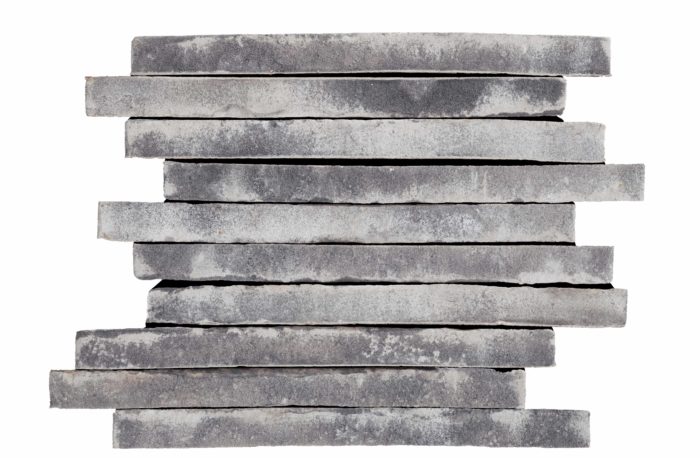
ANSWER: In the past, we did produce bricks at one time. However, I am not aware of us making structural clay blocks. Today, our parent company (Terreal) has this product type for use in the European market. Please take a look at these—they are amazing structural block-like elements that are very large in scale. They also offer standard and unique brick products, some of which we can provide and are on display in our Dallas Design Center (@ludowici_dallas).
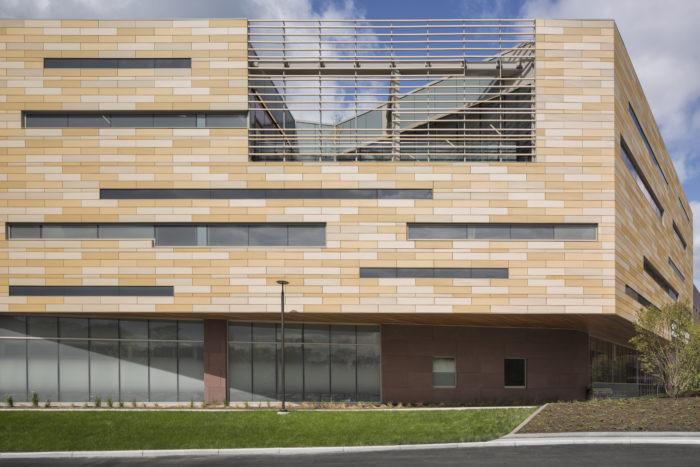
QUESTION: What factors limit the maximum product size? Material strength, handling, transportation, weight?
ANSWER: Yes, each of those items you note do play a role in the maximum size of a piece of terra cotta. Different clay bodies and manufacturing plants all have additional size capabilities. While most of the pieces we produce at our New Lexington, Ohio factory are smaller, some of our parent company factories can produce very large pieces.
For example, their large module wall cladding rainscreen tiles are made up of 2′ x 6′ planks. The clay body, drying equipment, and firing technology all significantly impact the size of the piece that can be successfully produced.
QUESTION: Do you have a section detail of a rainscreen installation? I’m also interested in seeing how the rainscreen wall cladding is installed?
ANSWER: We would be happy to provide this for you. First, you can visit our cladding website for more info, including prototypical details and REVIT models: www.terrealna.com. Second, we have a rainscreen cladding CEU presentation: Architecture and Terracotta Cladding (for AIA and IDCEC credit) that you may want to consider (or visit the online webinar schedule here).
In reference to the rainscreen installation of Terreal North America’s wall cladding products, the best opportunity to get specific answers would be to contact https://www.terrealna.com/contact/ directly. But there are a few helpful YouTube videos for specific products:
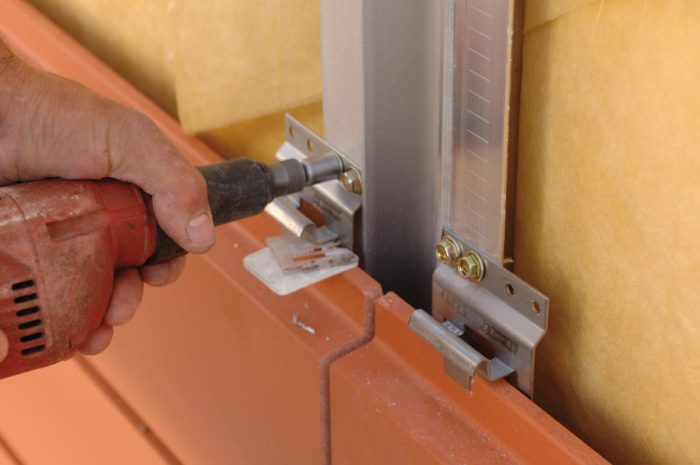
QUESTION: Do these hail and wind ratings also apply to Canada? Are there Canadian manufacturers of terra cotta tile?
ANSWER: We regularly supply tiles for projects in Canada and, in the past, have had no issue with the use or acceptance of our US technical performance tests. We would be happy to provide you with additional detail if you have a particular product in mind for a project.
As for the Canadian manufacturers, I do not believe so. We are pretty up to speed on competition in the marketplace and the manufacturers of terra cotta tiles. There are very few remaining in North America, and to my knowledge, none are based in Canada. However, throughout our history, Ludowici has regularly shipped material from our Ohio factory to Canada for projects.
QUESTION: I am curious about the strength and durability of your sunscreen baguettes. Are they reinforced?
ANSWER: Yes, the baguettes are reinforced with an internal support tube. Most of the time the inner tube is metal/aluminum. We typically engineer the assembly for the project, span, loads, etc. on a project by project basis.
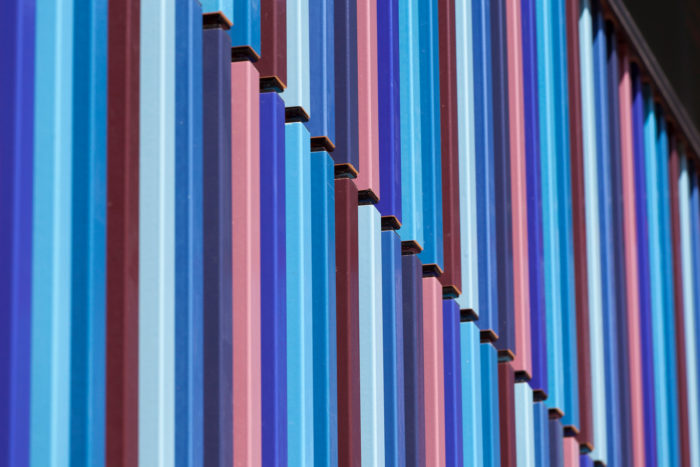
-All of the terracotta baguette units will be provided with an internal aluminum support tube, this tube helps reinforce the terracotta baguette unit.
-Horizontally oriented terracotta baguette units generally have a 5’ to 6’ maximum span depending on project requirements.
-Vertically oriented terracotta baguette units generally have a 6’ and 8’ maximum span depending on project requirements.
-The terracotta baguette units are engineered to resist the vertical, horizontal, and seismic load requirements for each project.
-Shorter terracotta baguette segments can be installed on a longer internal aluminum tube support to facilitate the longer spans. Example: (2) 3’-0” length terracotta baguette segments installed on a 6’-0” length internal aluminum support tube to provide a 6’-0” total baguette system span.
There are a variety of terracotta baguette profiles, please see this link for additional information: Terreal North America Baguettes
QUESTION: Do you make breeze blocks?
ANSWER: While we don’t make actual “Breeze Blocks”, our straight barrel mission tiles are often used for this application. Here is a photo of an interior wall in our design center with this type of application. Contractors will opt to use our tiles for these types of applications, especially for crawl spaces under structures.
